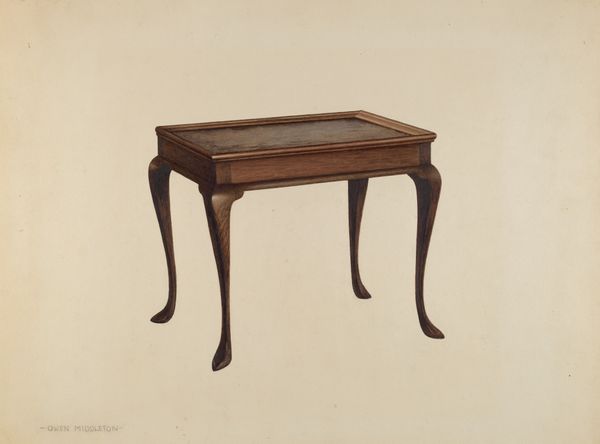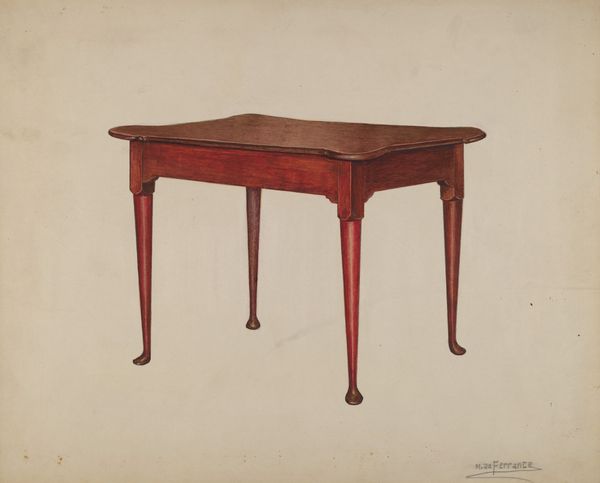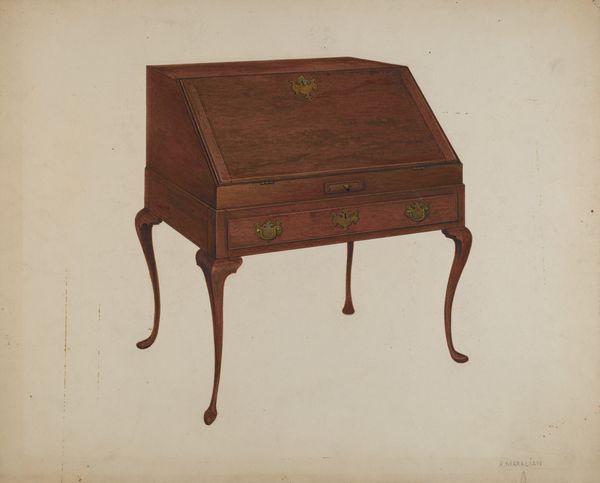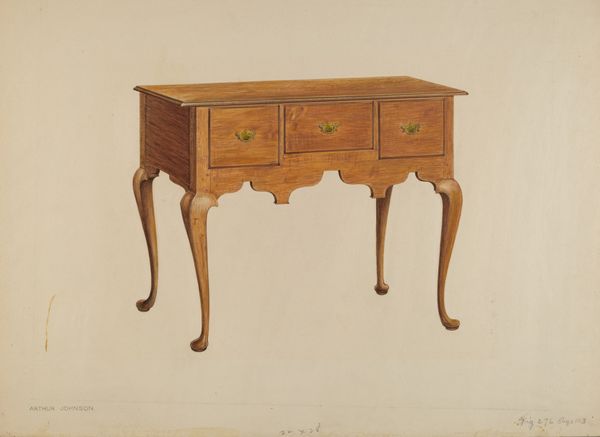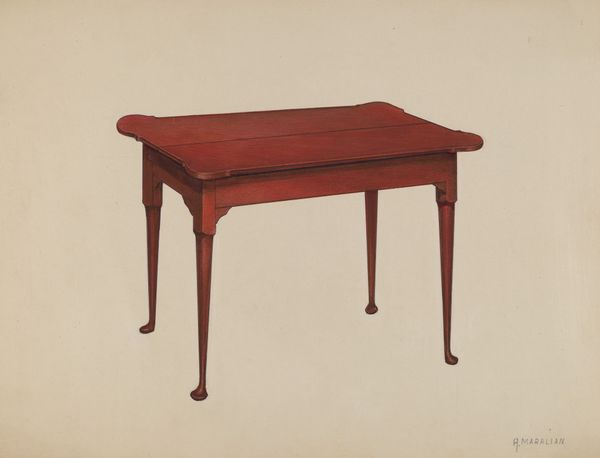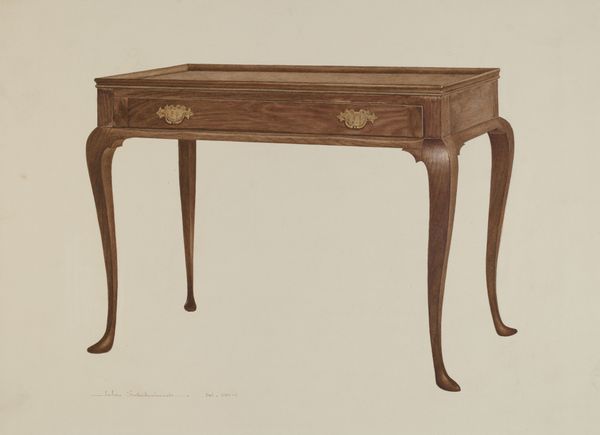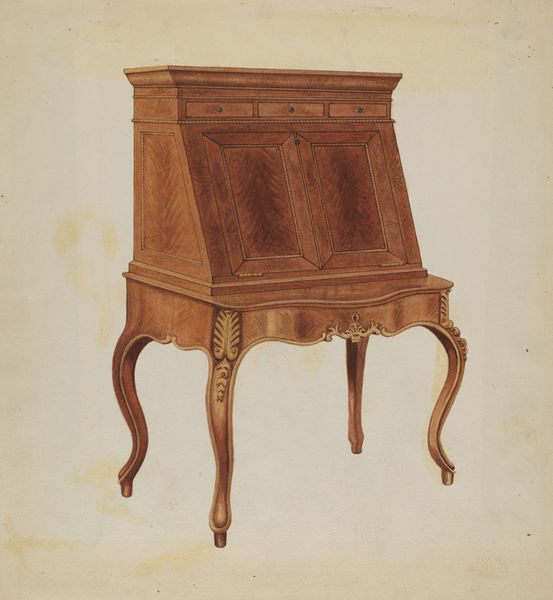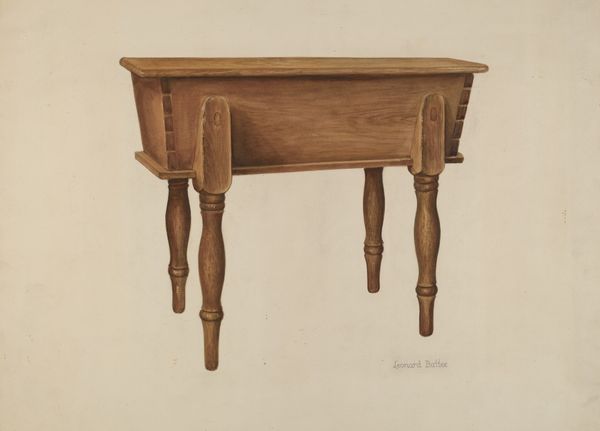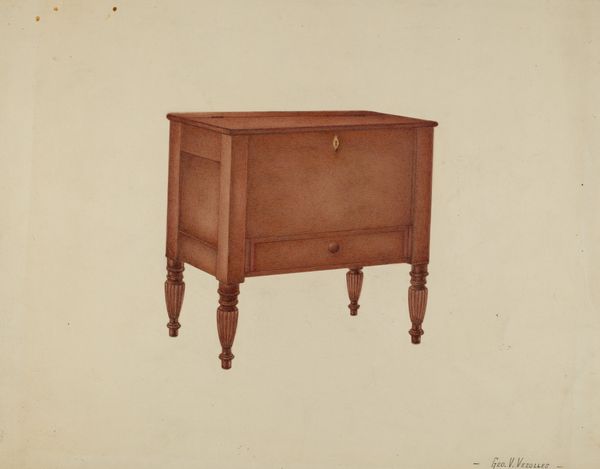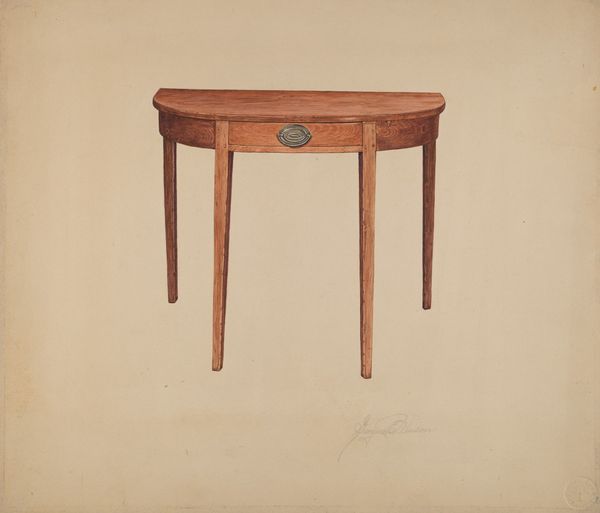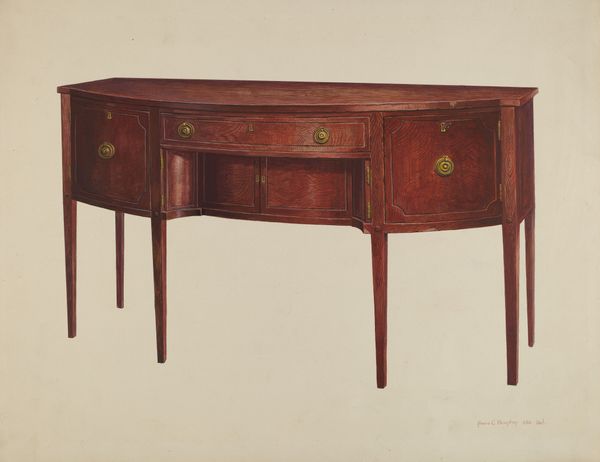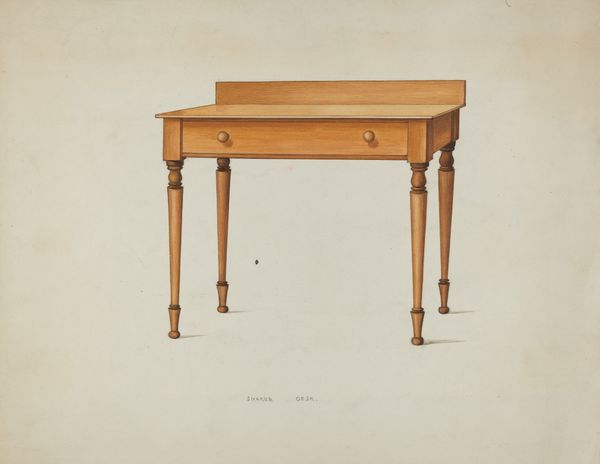
drawing, watercolor
#
drawing
#
water colours
#
figuration
#
watercolor
#
watercolour illustration
#
modernism
#
watercolor
Dimensions: overall: 35.7 x 45.8 cm (14 1/16 x 18 1/16 in.) Original IAD Object: 26 1/4"high; 29 1/2"long; 19 1/2"wide
Copyright: National Gallery of Art: CC0 1.0
Curator: This is “Tea Table,” a watercolor by Isadore Goldberg, created around 1939. What's your initial take? Editor: Elegant melancholy! It reminds me of hushed drawing rooms, the clink of china… and secrets whispered over Earl Grey. There's a strange loneliness to it, even for furniture. Curator: Indeed, Goldberg's modernist aesthetic here strips the subject of excess. It foregrounds form, material, and function: note the Queen Anne legs, their production deeply embedded in furniture-making history. We see mahogany rendered with remarkable precision through watercolor, elevating a domestic object to art. Editor: Mahogany always whispers luxury to me, of colonial exploits and distant lands fueling this…table's creation. Yet, Goldberg's chosen medium feels so delicate, almost apologetic, undercutting the imperial undertones. Curator: Perhaps that fragility reflects the changing times. Mass production was altering furniture availability and aesthetics then. Was this artistic preservation, a nod to skilled craftsmanship becoming obsolete? Editor: Absolutely, or maybe it's nostalgia tinged with unease. Look at how he renders the wood grain – a testament to the natural world, but also to our intervention. It’s beauty crafted, bought, owned. I can almost smell the wood polish and…a faint, almost metallic, scent. Curator: That’s an interesting reading, given the probable labour involved in constructing such tables then, often elided when thinking of consumption. Watercolor itself—its accessibility and supposed "domesticity"—also disrupts hierarchies. High art depicting something equally domestic. Editor: And by choosing such a common item, and making it so precious, Goldberg forces us to consider: What are we valuing, the object or the labour involved in creating it? Is it art imitating life, or is life staged and framed for art's sake? Curator: Exactly. It highlights how taste is a product too, shaped by socio-economic forces and cultural trends, not innate to individuals. It seems the artist invites us to consider design, labour, material and the ways that each impact our understanding. Editor: It seems even humble furniture can lead to a whole new set of perspectives on the world around us. Next time I’m sipping tea I know what I will be thinking about!
Comments
No comments
Be the first to comment and join the conversation on the ultimate creative platform.
